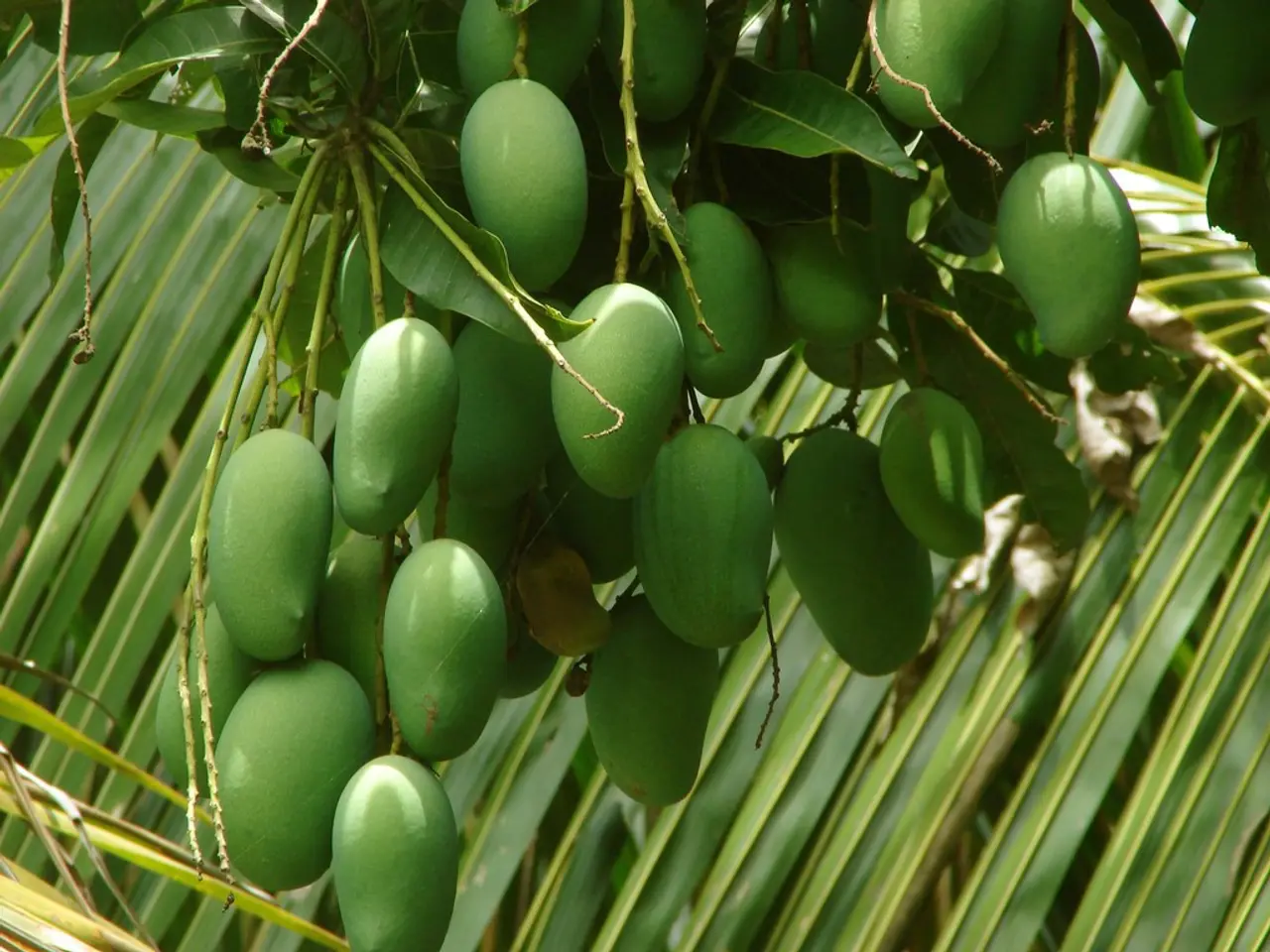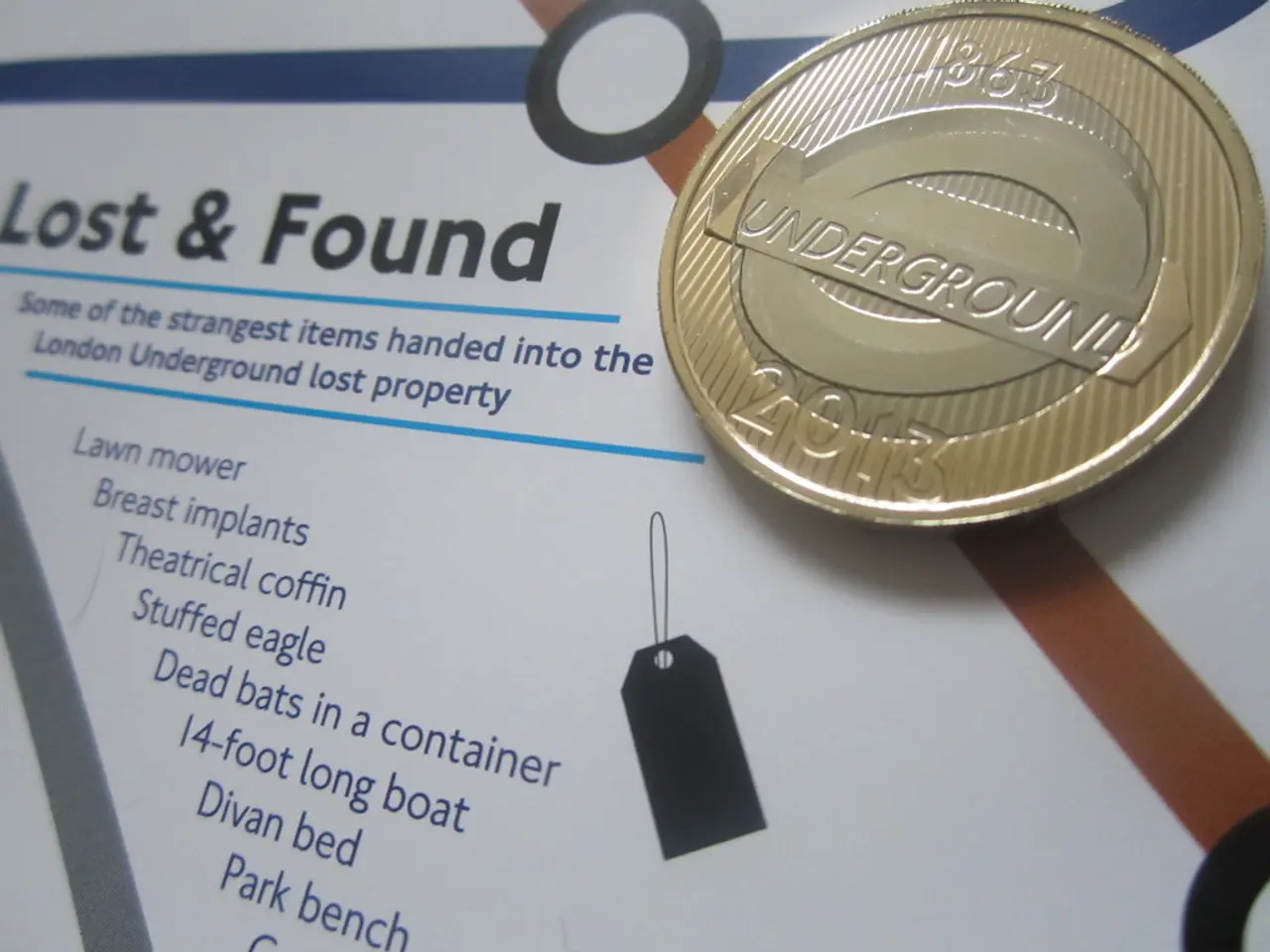Essential Elements for a Lucrative Mango Farming Enterprise in India
In the bustling agricultural landscape of India, mango farming presents a lucrative opportunity for entrepreneurs and farmers alike. To ensure success in this venture, a well-structured business plan is essential.
Market Analysis
Understanding the strong demand and growing export potential of mangoes is the first step. India, a top producer and exporter, delivers varieties like Alphonso and Kesar to markets including the UAE, Europe, and North America. Researching target customers (local wholesale markets, retailers, exporters) and competition is crucial, as is identifying government schemes or subsidies supporting mango cultivation and marketing, such as GI tag marketing and export subsidies.
Land and Location
Choosing the right location is paramount. Regions with fertile soil, good water availability, and proximity to markets reduce logistics costs. For example, areas around Chennai in Tamil Nadu—Tindivanam, Chengalpattu, and Gummidipoondi—offer fertile red soil, water resources, and connectivity, with price ranges between ₹5–18 lakhs per acre. Gujarat is also prominent, with large areas devoted to mango cultivation, including the export-famous Gir Kesar variety.
Cultivation Plan
The cultivation plan encompasses a timeline, from planting to the first harvest, as mango trees typically take 3-5 years to bear fruit. Selecting appropriate mango types based on climate, soil, and market need is crucial. The layout and spacing of the farm should ensure proper sunlight and airflow. Pest and disease management strategies are integral to this plan, as is the adoption of good agricultural practices.
Financial Planning
Detailed cost estimates cover land acquisition, planting material, labor, irrigation, fertilizers, pesticides, harvesting, packaging, and transportation. Infrastructure costs, such as irrigation systems and cold storage, are also considered. Estimated revenues are based on expected yields and current mango prices, with government subsidies for agriculture and horticulture factored in. Financial planning includes projections for profitability over the next 5-10 years.
Potential Risks and Mitigation
Risks include adverse weather, pest and disease outbreaks, fluctuating market prices, and logistics challenges. To mitigate, diversify varieties, use crop insurance, establish contracts with buyers or exporters, and maintain financial buffers. Monitor export market trends, as mango exports to the UAE and other countries are significant but sensitive to international demand and regulations.
A well-organized business plan integrates these elements: a thorough market study showing mango demand and export potential, informed site selection with quality land and water, a detailed cultivation calendar for chosen varieties, sound financial projections with government subsidy options, and risk management strategies tailored to horticulture. This approach balances traditional agricultural knowledge with business and marketing acumen needed for a profitable mango farming venture in India today.
Highlighting the farm's preparedness ensures a solid basis for future expansion. Estimated revenue in financial planning is based on expected yields and market prices, with popular varieties such as Alphonso, Totapuri, and Banganapalle often commanding high prices. The executive summary of a successful business plan should explain goals, vision, and purpose.
An entrepreneur venturing into mango farming in India must incorporate market analysis, land and location planning, suitable cultivation techniques, comprehensive financial projections, and effective risk management strategies within their business plan. The success of the farm relies on understanding the demand, target customers, and competition, while also identifying government subsidies that can benefit mango cultivation.
By adopting sustainable farming practices and leveraging available resources such as good agricultural practices, irrigation systems, and cold storage facilities, the food-and-drink business can achieve profitability over the next 5-10 years, with popular mango varieties like Alphonso, Totapuri, and Banganapalle providing lucrative returns in the market.




